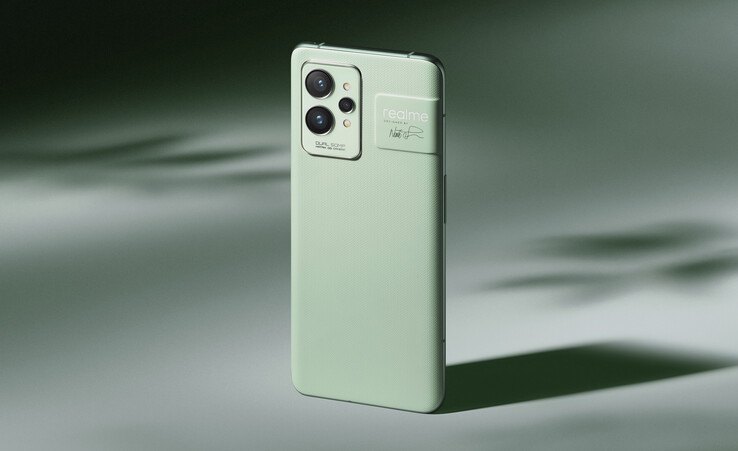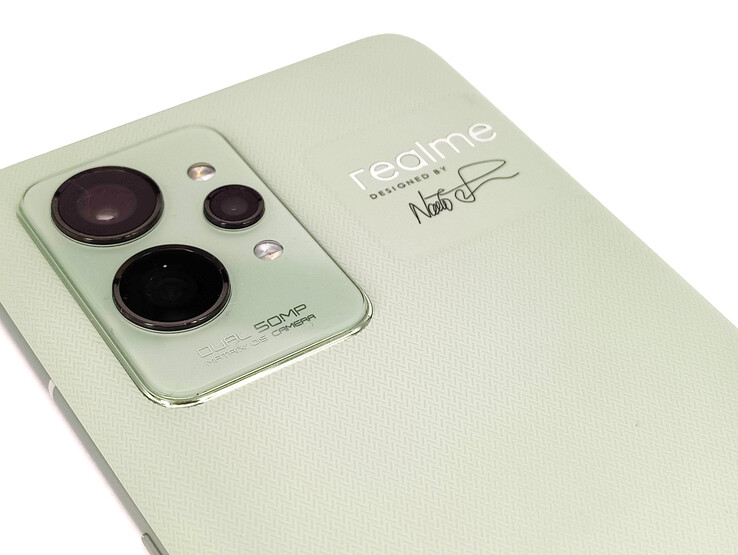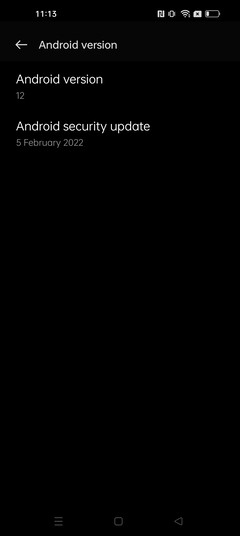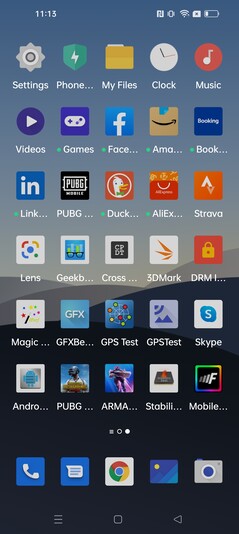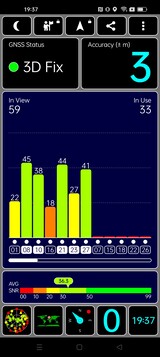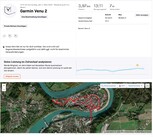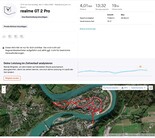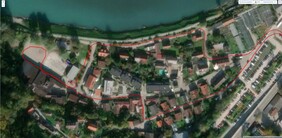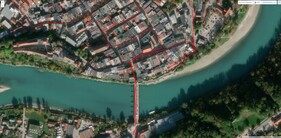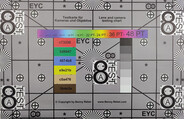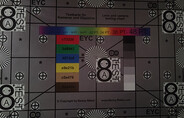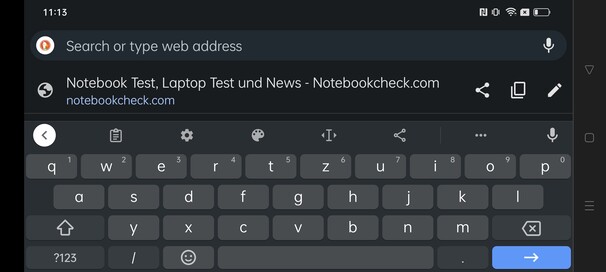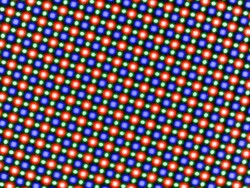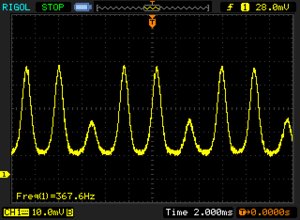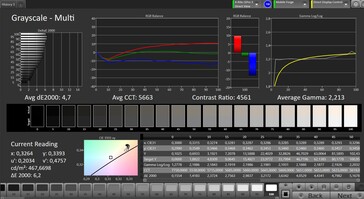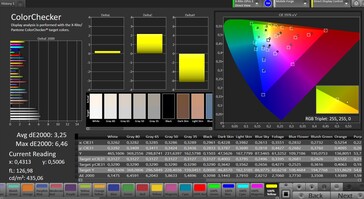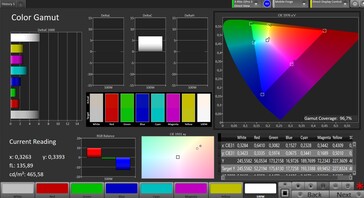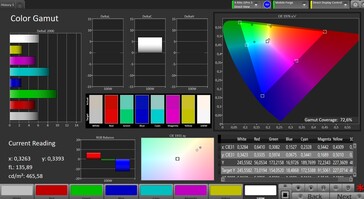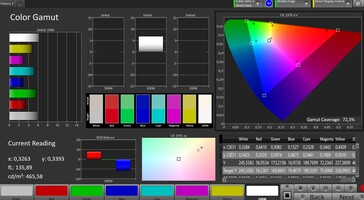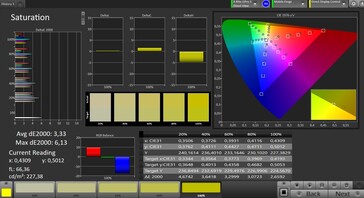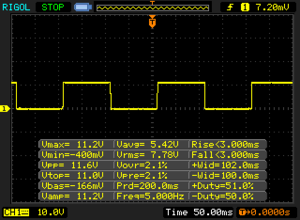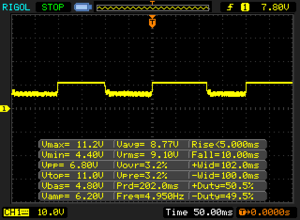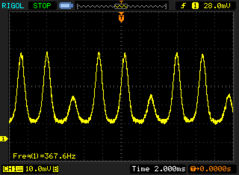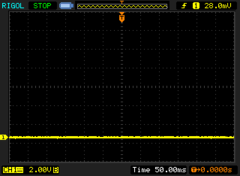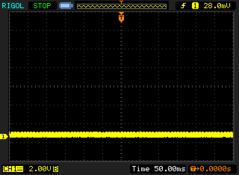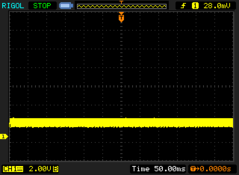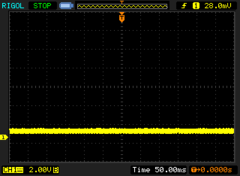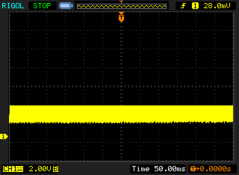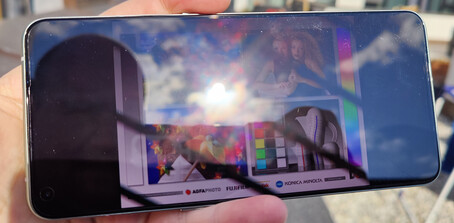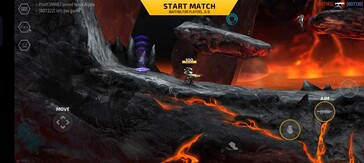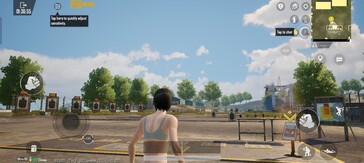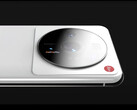realme GT 2 Pro Smartphone Review – High-performance designer phone
realme's most expensive smartphone thus far is called GT 2 Pro and designed to make other flagship phones cower in fear. To achieve this, it comes with the brand-new Snapdragon 8 Gen. 1 SoC and a fast, high-resolution AMOLED screen. Furthermore, the manufacturer includes a large battery and a fast charging technology.
Although this sounds good, a glance at the specifications reveals that there are a couple of features missing that many prospective buyers have come to expect from a smartphone with a price of more than 700 Euros (~770 USD). One example of this is the lack of wireless charging.
It will be exciting to see, how the realme phone, which now occupies the same price range as the iPhone 12, will fare compared to its competitors.
Potential Competitors in Comparison
Rating | Date | Model | Weight | Drive | Size | Resolution | Price |
|---|---|---|---|---|---|---|---|
| 87.4 % v7 (old) | 03 / 2022 | Realme GT 2 Pro SD 8 Gen 1, Adreno 730 | 189 g | 256 GB UFS 3.1 Flash | 6.70" | 3216x1440 | |
| 88.2 % v7 (old) | 11 / 2020 | Apple iPhone 12 A14, A14 Bionic GPU | 162 g | 64 GB SSD | 6.10" | 2532x1170 | |
| 87.9 % v7 (old) | 03 / 2022 | Motorola Edge 30 Pro SD 8 Gen 1, Adreno 730 | 196 g | 256 GB UFS 3.1 Flash | 6.70" | 2400x1080 | |
| 85.2 % v7 (old) | 12 / 2021 | Realme GT Neo 2 SD 870, Adreno 650 | 200 g | 256 GB UFS 3.1 Flash | 6.62" | 2400x1080 | |
| 88.6 % v7 (old) | 06 / 2022 | OnePlus 9 Pro SD 888 5G, Adreno 660 | 197 g | 256 GB UFS 3.1 Flash | 6.70" | 3216x1440 | |
| 85.9 % v7 (old) | 06 / 2021 | Asus ZenFone 8 SD 888 5G, Adreno 660 | 169 g | 256 GB UFS 3.1 Flash | 5.92" | 2400x1080 |
Case – realme Smartphone with Good Haptics and Sustainable Design
Simply creating a beautiful phone did not seem to cut for realme and its new flagship GT 2 Pro. Instead, the manufacturer hired well known industrial designer Naoto Fukasawa, whose works are on display in the Museum of Modern Art in New York, for example.
The result: A sleek, premium back with a zig-zag texture that can be felt with the hand, consisting of bioplastic with a smaller CO2 footprint. Of course, this does not yet make the realme flagship as a whole an environmentally friendly phone, but it is at least a first step. As an additional green measure, realme plants one tree for each device sold.
The smartphone has a solid construction that is protected by Gorilla Glass Victus in the front. There is also a preapplied screen protector. The material transitions are very clean, reinforcing the premium appeal of the smartphone. Three color variants are available: Paper white, paper green, and steel black.
Despite its 6.7-inch diagonal and the high-capacity battery, the smartphone is fairly lightweight and even slightly slimmer than the majority of its competition with 8.2 mm (~0.32 in). Note: The black color variant weighs in at 10 grams more than its alternatives. According to the manufacturer, This is due to its back, which instead of bioplastics, consists of a special kind of glass with an etched matte surface.
Since there is no IP certification, a protection against water or dust is not guaranteed.
Connectivity – Two storage options for the realme GT 2 Pro
The smartphone is available in two storage configurations with a price difference of 100 Euros (~110 USD):
- realme GT2 Pro with 128 GB storage/8 GB RAM: 749.99 Euro (~826 USD)
- realme GT2 Pro with 256 GB storage/12 GB RAM: 849.99 Euro (~937 USD)
Thus, it is cheaper than the OnePlus 9 Pro with the same storage configuration by around 150 Euros (~165 USD) at its release. Users who need more RAM can reserve additional parts of the storage space as system memory: While it is possible to allocate between 3 and 7 GB, it should not be required in the vast majority of cases.
There is no 3.5mm audio jack - instead, the audio signal is transmitted via the USB-C port. While there is a dual-SIM slot, it does not accept microSD cards for storage expansion. Thanks to NFC, users can exchange data with nearby devices and use mobile payment services such as Google Pay.
Software – realme UI 3 with an appealing design
The preinstalled realme UI 3.0 is based on ColorOS and Android 12. At the time of testing, the security patches date back to February 2022, making them fairly recent. The realme phone comes with a couple of preinstalled third-party apps such as shopping apps or games. They can be easily uninstalled, if desired.
The manufacturer also preinstalls a few of its own apps including the Phone Manager, which provides tips for optimizing the performance, or the gallery app, which automatically recognizes people and objects in pictures and organizes them accordingly.
Update: realme responded to our inquiry about the security patches and new Android version support for the GT 2 Pro: The smartphone is supposed to receive three Android version updates and security patches for four years. These are very reasonable support timeframes that seem to align with the sustainability aspect.
Communication and GNSS – 4G in many countries
Even though the realme GT 2 Pro ships with Qualcomm's latest SoC, the manufacturer has opted against enabling one of the most important new features of the Wi-Fi modem: Our test device does not support Wi-Fi 6E. Due to this, we used the 5-GHz band during our performance benchmark with our reference router Asus GT-AXE11000. Here, the smartphone reaches relatively consistent values between 800 and 900 Mb/s, making it a fairly good performer.
Thanks to the many supported 4G frequencies, connecting to LTE networks should be possible around the globe. 5G is, of course, also on board. Additionally, 5G standalone is supported, which provides support for networks which have been fully converted to the latest mobile communications standard as opposed to access point-only upgraded networks, allowing for even faster speeds.
According to the manufacturer, there are 12 antennas installed within the device, guaranteeing ideal signal strength and Wi-Fi connectivity in any situation. While our sample test indeed reveals an advantage in terms of the signal strength for the GT 2 Pro compared to other high-end phones such as the OnePlus 9 Pro, there are no noticeable differences when it comes to the speed at which pages load via mobile data connections.
| Networking | |
| iperf3 transmit AX12 | |
| Asus ZenFone 8 | |
| Realme GT Neo 2 | |
| Apple iPhone 12 | |
| OnePlus 9 Pro | |
| iperf3 receive AX12 | |
| Asus ZenFone 8 | |
| OnePlus 9 Pro | |
| Realme GT Neo 2 | |
| Apple iPhone 12 | |
| iperf3 receive AXE11000 | |
| Motorola Edge 30 Pro | |
| Realme GT 2 Pro | |
| Average of class Smartphone (52 - 1721, n=177, last 2 years) | |
| iperf3 transmit AXE11000 | |
| Realme GT 2 Pro | |
| Motorola Edge 30 Pro | |
| Average of class Smartphone (49.8 - 1828, n=177, last 2 years) | |
Although a satellite uplink is quickly established outdoors for precise geolocation, the maximum precision of within 3 meters is only achieved after a few seconds. In order to locate us, the smartphone communicates with various satellites from the GPS, AGPS, BeiDou, Glonass, QZSS, and Galileo networks.
In our real-world test, which consists of a bike ride with the Garmin Venu 2 for comparison purposes, the realme GT 2 Pro shows itself to be suitable for geolocation overall. That being said, it somewhat frequently deviates from the actual track and places our position marker in front yards or rooftops. Here, the Garmin Venu 2 is significantly more accurate. All in all, the realme GT 2 Pro can be used for navigation purposes, although users who need exact data will have to look elsewhere.s
Telephony and Call Quality – Sound OK
For telephony, realme uses Google's default Android app. This was not a bad decision, since the app is well organized, intuitive, and familiar from a plethora of other Android smartphones.
The call quality is OK. Although the earpiece slightly overmodulates at maximum volume, causing the voice of our conversational partner to drone somewhat, the voices of callers on the other end of the line remain discernible even in loud environments. Our voice is captured relatively clearly.
When using the speakerphone, the smartphone reproduces the voice of our conversational partner distinctly and our voice is transmitted clearly in hands-free mode, even when speaking more quietly.
Cameras – Two high-res cameras and great software
Following similar trends, there are two high-resolution cameras on the back of realme's smartphone as well: The main camera and the wide-angle lens each have a resolution of 50 MP and combine clusters of 4 pixels into one to create 12-MP pictures with a higher light sensitivity.
While the main optics supports optical image stabilization and takes good pictures in daylight with a fairly high degree of sharpness, it cannot quite keep up with other high-end smartphones such as the iPhone 13. Furthermore, large areas such as the sky in the landscape picture tend to suffer from fairly significant graininess.
In low-light, high-contrast situations the brightening and the color reproduction are decent, although the sharpness could have been better in this case as well.
Despite the high resolution, the wide-angle lens lacks detail in objects that are far away and also has some issues with the sharpness.
The main camera is able to capture video at 8K and 24 FPS, if desired. While up to 60 FPS is available at 4K, this mode disables recording via the wide-angle lens. At 4K 30FPS and below, the wide-angle and main optics can be switched between freely via an infinitely variable zoom and even at different speeds. The autofocus is quick to respond, which results in good video recordings.
The camera software offers numerous opportunities for experimenting such as a fisheye mode for the wide-angle lens, a stargazing mode, or street photography with various different filters.
Thanks to the extremely short focal distance of the macro optics, it can be used like a microscope to capture the fabric textures or plants at high zoom levels.
Image comparison
Choose a scene and navigate within the first image. One click changes the position on touchscreens. One click on the zoomed-in image opens the original in a new window. The first image shows the scaled photograph of the test device.
Hauptkamera PflanzeHauptkamera UmgebungHauptkamera Low LightWeitwinkelkameraWhile the camera exhibits a high dynamic range in our laboratory test under controlled lighting conditions, the sharpness could have been better here, as well. In very dark scenarios, some details and colors remain discernible, while the sharpness drops further.
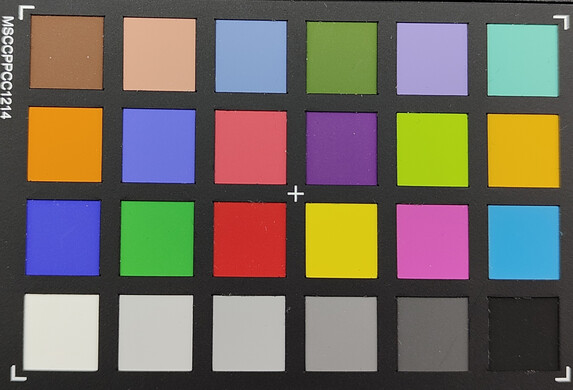
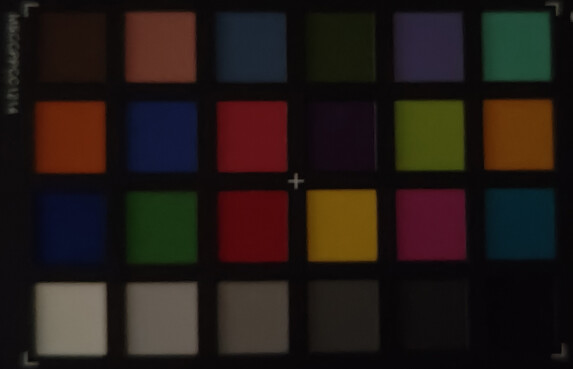
Accessories and Warranty – Bumper case included
The scope of delivery includes a charger, a USB cable, a SIM tool, and a dark gray silicone bumper. Even though there are numerous headphones, a power bank, and many more accessories available on realme's website, there are no accessories specifically designed for the realme GT 2 Pro.
Thankfully, realme offers a 24-month warranty on not just the smartphone, but also the included accessories (charger and USB cable). The duration and scope may vary for US-based citizens.
Input Devices & Handling – Responsive screen for fast inputs
Thanks to the blazing-fast processor and the high refresh rate of the display, the user experience of the realme GT 2 Pro shines with very responsive inputs. This can certainly also be at least partially attributed to the touchscreen's high sampling rate of up ot 1000 Hz.
The power button and volume control are the only physical buttons on the device. Both consist of metal, have premium haptics, and offer a distinct feedback when pressed.
The fingerprint sensor is well hidden under the display. Although it is not quite as fast as some of its counterparts on other models, it still quickly and reliably unlocks the phone. It is even able to detect the current heart rate. While it is also possible to unlock the phone via facial recognition, this method is slightly less secure since it is purely a software solution.
Display – realme GT 2 Pro with a bright AMOLED screen
The realme GT 2 Pro features an AMOLED screen with LTPO. This allows it to freely vary its refresh rate between 1 Hz (viewing static pictures or text) and 120 Hz (fast movements, scrolling, videos) to conserve energy without giving up the advantages of smooth animations.
With its 1440p resolution, the panel is superior compared to many other smartphones in this price category. It is questionable if it makes sense to have this many pixels on a relatively small smartphone display, but the resolution can be reduced to 1080p in order to improve the battery life. Fortunately, there is an automatic mode here as well, which adjusts the resolution according to the viewed content.
With 732 nits on average, the HDR10+ certified display can get very bright. The illumination is very even.
| |||||||||||||||||||||||||
Brightness Distribution: 98 %
Center on Battery: 740 cd/m²
Contrast: ∞:1 (Black: 0 cd/m²)
ΔE ColorChecker Calman: 3.25 | ∀{0.5-29.43 Ø4.77}
ΔE Greyscale Calman: 4.7 | ∀{0.09-98 Ø5}
96.7% sRGB (Calman 2D)
Gamma: 2.213
CCT: 5663 K
| Realme GT 2 Pro AMOLED, 3216x1440, 6.7" | Apple iPhone 12 OLED, 2532x1170, 6.1" | Motorola Edge 30 Pro AMOLED, 2400x1080, 6.7" | Realme GT Neo 2 AMOLED, 2400x1080, 6.6" | OnePlus 9 Pro AMOLED, 3216x1440, 6.7" | Asus ZenFone 8 AMOLED, 2400x1080, 5.9" | |
|---|---|---|---|---|---|---|
| Screen | 32% | 30% | -11% | 34% | 13% | |
| Brightness middle (cd/m²) | 740 | 642 -13% | 649 -12% | 767 4% | 733 -1% | 758 2% |
| Brightness (cd/m²) | 732 | 639 -13% | 649 -11% | 767 5% | 746 2% | 759 4% |
| Brightness Distribution (%) | 98 | 97 -1% | 98 0% | 97 -1% | 97 -1% | 98 0% |
| Black Level * (cd/m²) | ||||||
| Colorchecker dE 2000 * | 3.25 | 0.9 72% | 1.18 64% | 3.47 -7% | 0.95 71% | 3.5 -8% |
| Colorchecker dE 2000 max. * | 6.46 | 2.42 63% | 2.07 68% | 9.23 -43% | 2.01 69% | |
| Greyscale dE 2000 * | 4.7 | 0.8 83% | 1.5 68% | 5.9 -26% | 1.7 64% | 1.6 66% |
| Gamma | 2.213 99% | 2.188 101% | 2.236 98% | 2.275 97% | 2.21 100% | 2.23 99% |
| CCT | 5663 115% | 6404 101% | 2538 256% | 7800 83% | 6591 99% | 6527 100% |
* ... smaller is better
Screen Flickering / PWM (Pulse-Width Modulation)
| Screen flickering / PWM detected | 367.6 Hz | ||
The display backlight flickers at 367.6 Hz (worst case, e.g., utilizing PWM) . The frequency of 367.6 Hz is relatively high, so most users sensitive to PWM should not notice any flickering. However, there are reports that some users are still sensitive to PWM at 500 Hz and above, so be aware. In comparison: 53 % of all tested devices do not use PWM to dim the display. If PWM was detected, an average of 8084 (minimum: 5 - maximum: 343500) Hz was measured. | |||
Unfortunately, the color accuracy is slightly worse compared to other smartphones in this price range and there is a faint red tint in the "natural" mode. The color representation is still more than accurate enough for daily use. Furthermore, there are numerous settings, which can be used to adjust the color temperature according to one's preferences.
At low brightness levels, we detect the usual OLED display PWM flickering. At brightness levels of 50 % and above, its behavior changes and the flickering seems to become more steady. We still recommend sensitive users to take a look at the screen of the phone before purchasing, particularly since although there is a DC dimming setting, it is hidden very well in the developer settings.
Display Response Times
| ↔ Response Time Black to White | ||
|---|---|---|
| 6 ms ... rise ↗ and fall ↘ combined | ↗ 3 ms rise | |
| ↘ 3 ms fall | ||
| The screen shows very fast response rates in our tests and should be very well suited for fast-paced gaming. In comparison, all tested devices range from 0.1 (minimum) to 240 (maximum) ms. » 17 % of all devices are better. This means that the measured response time is better than the average of all tested devices (20.2 ms). | ||
| ↔ Response Time 50% Grey to 80% Grey | ||
| 15 ms ... rise ↗ and fall ↘ combined | ↗ 5 ms rise | |
| ↘ 10 ms fall | ||
| The screen shows good response rates in our tests, but may be too slow for competitive gamers. In comparison, all tested devices range from 0.165 (minimum) to 636 (maximum) ms. » 28 % of all devices are better. This means that the measured response time is better than the average of all tested devices (31.6 ms). | ||
Although the display is usable outdoors thanks ot its high brightness, the significant glare under direct sunlight makes use under shade a far more sensible option.
Thanks to the underlying OLED technology, the viewing angles are near perfect and the screen's content remains discernible even at extreme angles.
Performance – Lots of power and fast storage
At the heart of the smartphone, there is a brand-new Qualcomm Snapdragon 8 Gen 1, which is currently one of the fastest mobile processors on the market. It only falls behind in a comparison with Apple's processors including even the Apple A14 from two years ago.
Still: Most applications from Google's Play Store will likely not even come close to exhausting the performance capabilities of the realme GT 2 Pro. Opening multiple apps simultaneously and letting them work in the background while playing modern Android games is the only scenario that is at least somewhat taxing to the processor. During daily use, the realme GT 2 Pro provides a very smooth user experience.
Similarly, the smartphone has a lot to offer in terms of graphics performance: Even demanding games or video editing apps, which make use of the graphics chip, run very smoothly.
| Antutu v9 - Total Score | |
| Motorola Edge 30 Pro | |
| Realme GT 2 Pro | |
| Average Qualcomm Snapdragon 8 Gen 1 (692924 - 1041980, n=18) | |
| Average of class Smartphone (99654 - 2056989, n=24, last 2 years) | |
| Asus ZenFone 8 | |
In our browser benchmarks, the realme GT 2 Pro reaches fairly average scores and tends to be in the middle of the pack compared to other devices in our comparison. Surprisingly, our real-world test confirms these results and the GT 2 Pro scores negative points due to many web pages loading slowly.
| Jetstream 2 - 2.0 Total Score | |
| Apple iPhone 12 (Safari 14) | |
| Average of class Smartphone (23.8 - 387, n=148, last 2 years) | |
| Motorola Edge 30 Pro (Chrome 99) | |
| Average Qualcomm Snapdragon 8 Gen 1 (72.8 - 134.6, n=16) | |
| Realme GT 2 Pro (Chrome 99) | |
| OnePlus 9 Pro (Microsoft Edge 46) | |
| JetStream 1.1 - Total Score | |
| Apple iPhone 12 (Safari 14) | |
| Motorola Edge 30 Pro (Chrome 99) | |
| Average Qualcomm Snapdragon 8 Gen 1 (121.9 - 237, n=11) | |
| Asus ZenFone 8 (Chrome 90) | |
| OnePlus 9 Pro (Microsoft Edge 46) | |
| Realme GT 2 Pro (Chrome 99) | |
| Speedometer 2.0 - Result 2.0 | |
| Average of class Smartphone (15.2 - 643, n=120, last 2 years) | |
| Apple iPhone 12 (Safari 14) | |
| Motorola Edge 30 Pro (Chome 99) | |
| Realme GT 2 Pro (Chome 99) | |
| Average Qualcomm Snapdragon 8 Gen 1 (64.4 - 129.3, n=16) | |
| OnePlus 9 Pro (Microsoft Edge 46) | |
| Octane V2 - Total Score | |
| Apple iPhone 12 (Safari 14) | |
| Motorola Edge 30 Pro (Chrome 99) | |
| Average of class Smartphone (2228 - 126661, n=195, last 2 years) | |
| Average Qualcomm Snapdragon 8 Gen 1 (27730 - 50626, n=17) | |
| Asus ZenFone 8 (Chrome 90) | |
| Realme GT 2 Pro (Chrome 99) | |
| OnePlus 9 Pro (Microsoft Edge 46) | |
| Mozilla Kraken 1.1 - Total | |
| OnePlus 9 Pro (Microsoft Edge 46) | |
| Asus ZenFone 8 (Chrome 90) | |
| Average of class Smartphone (257 - 28190, n=155, last 2 years) | |
| Realme GT 2 Pro (Chrome 99) | |
| Average Qualcomm Snapdragon 8 Gen 1 (814 - 1440, n=16) | |
| Motorola Edge 30 Pro (Chrome 99) | |
| Apple iPhone 12 (Safari 14) | |
* ... smaller is better
The fast storage plays a role in the smooth and responsive user experience: The realme GT 2 Pro uses UFS 3.1, which is particularly fast during sequential writes, while being at least on par with other devices in our comparison in all other subscores.
| Realme GT 2 Pro | Motorola Edge 30 Pro | Realme GT Neo 2 | OnePlus 9 Pro | Asus ZenFone 8 | Average 256 GB UFS 3.1 Flash | Average of class Smartphone | |
|---|---|---|---|---|---|---|---|
| AndroBench 3-5 | 5% | -9% | -8% | -6% | 6% | 30% | |
| Sequential Read 256KB (MB/s) | 1749 | 1832 5% | 1761 1% | 1995 14% | 1781 2% | 1757 ? 0% | 2245 ? 28% |
| Sequential Write 256KB (MB/s) | 1225 | 1028 -16% | 763 -38% | 769 -37% | 767 -37% | 1204 ? -2% | 1877 ? 53% |
| Random Read 4KB (MB/s) | 273 | 277.7 2% | 281.1 3% | 258.7 -5% | 292.3 7% | 287 ? 5% | 298 ? 9% |
| Random Write 4KB (MB/s) | 264 | 339.5 29% | 260.2 -1% | 254.3 -4% | 272.9 3% | 318 ? 20% | 344 ? 30% |
Gaming – 60-FPS gaming with no issues
Gaming at 60 frames per second is possible and in the case of PUBG Mobile, even HD settings can be selected, whereas only 40 FPS are reached in Ultra HD mode. We use GameBench to measure the frame rates. Although higher frame rates should theoretically be possible in Armajet, the smartphone likely limits its performance in order to conserve energy.
The smartphone comes with its own gaming mode and even supports a high performance state via the GT mode. The latter will most likely not be necessary for most mobile games, since the Adreno 730 is more than capable in its default state.
We have no criticism concering the touchscreen and gyroscope controls in games.
Emissions – Heavy Throttling
Temperature
While surface temperatures 44.5 °C (112.1 °F) fall within the expected limits of very fast phones, the smartphone may get even hotter on warm summer days, making it uncomfortable to leave the realme GT 2 Pro in your hand or pocket when it is under load.
The realme smartphone also displays a fairly common behavior for Snapdragen 8 Gen 1 devices in our prolonged stress test. The performance drops after a short time and stabilizes at around 2/3 of its peak. While this is, of course, an annoyance, most users likely will not notice due to the high absolute performance of the processor.
(±) The maximum temperature on the upper side is 44.5 °C / 112 F, compared to the average of 35.2 °C / 95 F, ranging from 21.9 to 247 °C for the class Smartphone.
(±) The bottom heats up to a maximum of 43.3 °C / 110 F, compared to the average of 34 °C / 93 F
(+) In idle usage, the average temperature for the upper side is 31.3 °C / 88 F, compared to the device average of 32.9 °C / 91 F.
3DMark Wild Life Stress Test
| 3DMark | |
| Wild Life Stress Test Stability | |
| Asus ZenFone 8 | |
| Realme GT 2 Pro | |
| OnePlus 9 Pro | |
| Motorola Edge 30 Pro | |
| Wild Life Extreme Stress Test | |
| Asus ZenFone 8 | |
| Realme GT 2 Pro | |
| Motorola Edge 30 Pro | |
Speakers
The stereo speakers of the realme GT 2 Pro can become quite loud. They sound good, offer a fairly good range down to the low mids, and do not distort even at maximum volume. However, high-end smartphones such as the Motorola Edge 30 Pro can offer even more range.
Headphones or speakers can be connected via the USB-C port or Bluetooth. In terms of wireless connections, all major codecs are supported including SBC, AAC, APTX, APTX HD, LDAC, and LHDC.
Realme GT 2 Pro audio analysis
(+) | speakers can play relatively loud (89.5 dB)
Bass 100 - 315 Hz
(-) | nearly no bass - on average 20.9% lower than median
(±) | linearity of bass is average (14% delta to prev. frequency)
Mids 400 - 2000 Hz
(±) | higher mids - on average 6.4% higher than median
(+) | mids are linear (5% delta to prev. frequency)
Highs 2 - 16 kHz
(+) | balanced highs - only 4.1% away from median
(+) | highs are linear (4.3% delta to prev. frequency)
Overall 100 - 16.000 Hz
(±) | linearity of overall sound is average (20.1% difference to median)
Compared to same class
» 33% of all tested devices in this class were better, 9% similar, 59% worse
» The best had a delta of 11%, average was 35%, worst was 134%
Compared to all devices tested
» 51% of all tested devices were better, 8% similar, 41% worse
» The best had a delta of 4%, average was 24%, worst was 134%
Asus ZenFone 8 audio analysis
(+) | speakers can play relatively loud (86.7 dB)
Bass 100 - 315 Hz
(-) | nearly no bass - on average 20.9% lower than median
(±) | linearity of bass is average (13.6% delta to prev. frequency)
Mids 400 - 2000 Hz
(+) | balanced mids - only 4.4% away from median
(+) | mids are linear (3.8% delta to prev. frequency)
Highs 2 - 16 kHz
(+) | balanced highs - only 3.7% away from median
(+) | highs are linear (2.7% delta to prev. frequency)
Overall 100 - 16.000 Hz
(+) | overall sound is linear (14.5% difference to median)
Compared to same class
» 1% of all tested devices in this class were better, 2% similar, 97% worse
» The best had a delta of 11%, average was 35%, worst was 134%
Compared to all devices tested
» 18% of all tested devices were better, 4% similar, 78% worse
» The best had a delta of 4%, average was 24%, worst was 134%
Energy Management – Large batteries lead to long runtimes
Energy Consumption
The realme GT 2 Pro performs well in terms of the energy consumption. Even though the powerful processor can be quite demanding under load, it is equally economical during simple tasks.
| Off / Standby | |
| Idle | |
| Load |
|
Key:
min: | |
| Realme GT 2 Pro 5000 mAh | Apple iPhone 12 2815 mAh | Motorola Edge 30 Pro 4800 mAh | OnePlus 9 Pro 4500 mAh | Asus ZenFone 8 4000 mAh | Average Qualcomm Snapdragon 8 Gen 1 | Average of class Smartphone | |
|---|---|---|---|---|---|---|---|
| Power Consumption | -0% | -15% | -32% | 26% | -17% | -3% | |
| Idle Minimum * (Watt) | 1 | 0.9 10% | 1.2 -20% | 1.6 -60% | 0.82 18% | 1.255 ? -26% | 0.847 ? 15% |
| Idle Average * (Watt) | 1.4 | 1.5 -7% | 1.6 -14% | 2 -43% | 1.1 21% | 2.02 ? -44% | 1.445 ? -3% |
| Idle Maximum * (Watt) | 1.7 | 1.8 -6% | 2.5 -47% | 2.4 -41% | 1.16 32% | 2.21 ? -30% | 1.629 ? 4% |
| Load Average * (Watt) | 5.3 | 5.5 -4% | 5.2 2% | 6.2 -17% | 4.24 20% | 5.49 ? -4% | 6.97 ? -32% |
| Load Maximum * (Watt) | 11.1 | 10.4 6% | 10.4 6% | 11 1% | 6.83 38% | 8.75 ? 21% | 11.2 ? -1% |
* ... smaller is better
Consumption: Geekbench (150 nits)
Consumption: GFXBench (150 nits)
Battery Life
With its generous 5000-mAh battery (technically two batteries with 2500 mAh each), the GT 2 Pro's battery capacity exceeds that of almost all of its competitors in this comparison and reaches a very long runtime of 17:33 hours in our Wi-Fi test. Only the OnePlus 9 Pro is able to even come close.
Thanks to SuperDart charge, the smartphone is ready to go again in no time: With a maximum charging rate of 65 watts, the battery charge is at several percentage points after only a few minutes. Fully recharging the batteries can be accomplished within less than an hour.
| Realme GT 2 Pro 5000 mAh | Apple iPhone 12 2815 mAh | Motorola Edge 30 Pro 4800 mAh | Realme GT Neo 2 5000 mAh | OnePlus 9 Pro 4500 mAh | Asus ZenFone 8 4000 mAh | |
|---|---|---|---|---|---|---|
| Battery runtime | 4% | -7% | -9% | 1% | -58% | |
| Reader / Idle (h) | 34.3 | 43.4 27% | 33.1 -3% | 35.2 3% | ||
| H.264 (h) | 18.1 | 18.9 4% | 16.8 -7% | 17.9 -1% | ||
| WiFi v1.3 (h) | 17.6 | 15.8 -10% | 13.6 -23% | 16 -9% | 16.7 -5% | 7.4 -58% |
| Load (h) | 4.9 | 4.7 -4% | 5.1 4% | 5.3 8% |
Pros
Cons
Verdict – Pretty, fast and equipped with many camera modes
Even though the lack of a few features such as wireless charging or Wi-Fi 6E preclude the GT 2 Pro from being one of the absolute top smartphones: At its current price, the realme GT 2 Pro is a very good choice that combines fast performance, a great display, and an elegant design with a low weight. Furthermore, it offers long battery life, a modern and well organized user interface and stable networking.
The camera system performs well and allows for 8K video recording, while the software comes with several interesting modes for experimenting. Although it achieves good results overall, it is not quite top tier.
The realme GT 2 Pro is a fast, sleek, and well equipped smartphone. However, a few features that we have come to expect from a high-end smartphone are missing.
We are pleased to see realme take the environment into consideration by using bioplastics for its green and white models, reducing the material consumption. Their premium workmanship and unique design make these two models a particularly enticing proposition.
The Apple iPhone 12 comes with even more performance, although it offers less storage for the same price. If you value wireless charging and even more sophisticated speakers, we recommend taking a closer look at the Motorola Edge 30 Pro.
Price and Availability
The GT 2 Pro is not available from major retailers in the US. Instead, it has to be imported through import shops such as TradingShenzhen, where it is available starting from 746.21 USD.
Realme GT 2 Pro
- 08/30/2022 v7 (old)
Florian Schmitt




